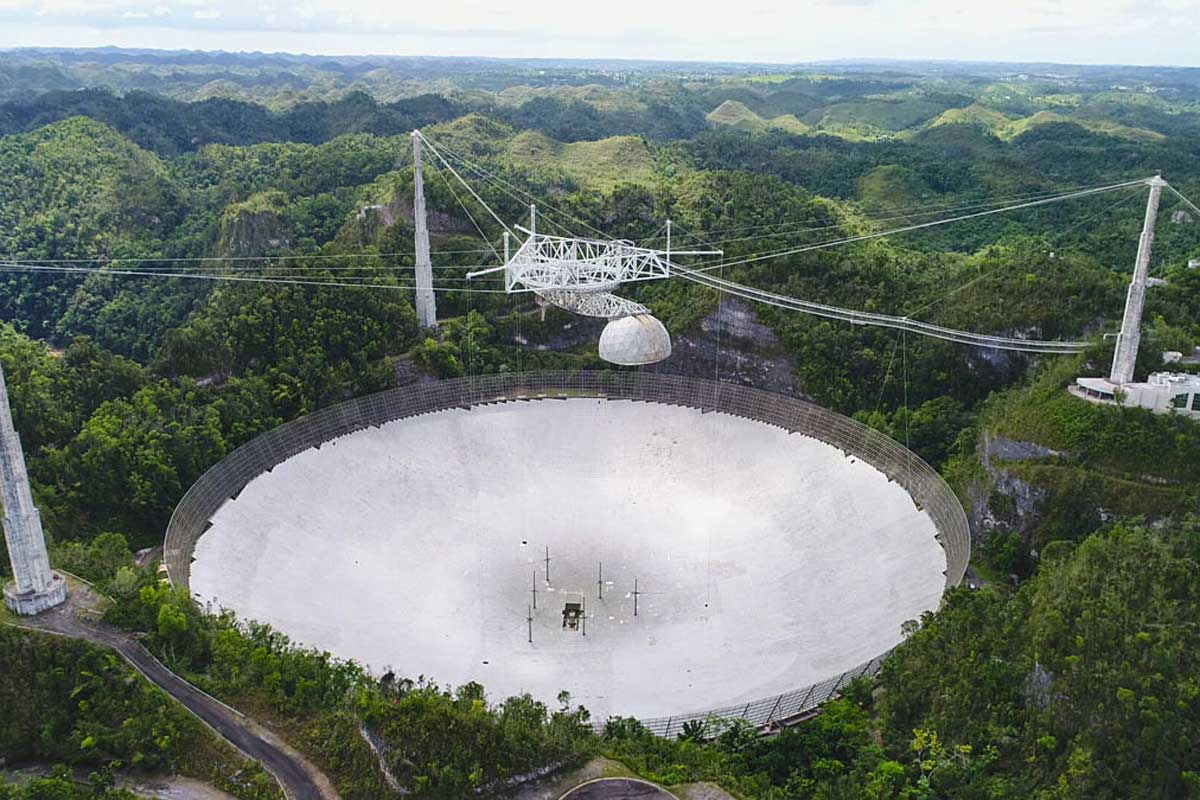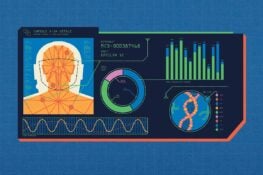Today marks 30 days since the Arecibo Observatory went offline, because an auxiliary cable broke and damaged the dish and Gregorian Dome.
While no cause has yet been determined, the AO leadership team is working closely with the National Science Foundation (NSF), which owns the facility, to implement a plan to first stabilize the critical structural elements of the facility and to initiate a full forensic investigation of the cause of the cable failure.
UCF manages the NSF-facility under a cooperative agreement with Universidad Ana G. Méndez and Yang Enterprises Inc.
UPDATED Oct. 12, 2020
“We continue to make progress, but the process is slow, as we develop a comprehensive plan for facility repairs while prioritizing the safety of our staff,” said Francisco Cordova, the director of the facility. “Our staff, as well as the external firms that have been hired are working diligently to understand the cause of the failure and make plans on how we can return the telescope to normal operations as soon as possible.”
What had been done to date (10/12/2020):
- A full structural model has been developed for the Arecibo Observatory platform, towers and suspension cables. The model has enabled us to better understand margins of safety and capacities for the existing structure and to take appropriate action in repair plans as installation of temporary repairs and further assessment proceeds.
- Cable sag surveys were completed for all auxiliary cables. These surveys were necessary to calculate actual loads on the cables, and properly calibrate the structural model.
- A complete safety assessment plan has been developed, making sure that quantifiable measures of structural integrity and capability are captured before crews are allowed to perform temporary repair work in those areas.
- The socket that was involved in the failure was removed on Sept. 28 the hardware was shipped to Florida for forensic evaluation at the NASA Kennedy Space Center. Experts at the center will conduct nondestructive analysis and tests in conjunction with the forensic engineering firm leading the investigation. It is expected that this work will be complete by the end of October. The forensic investigation will also include evaluation of the failed cable and eventually, the socket that is still attached to the platform.
- Over the last week we initiated the installation of an instrumentation system, which will continually monitor the condition of the structure. This is necessary to monitor the condition of the structure to help us minimize the risk to our staff working on and in proximity to the structure. The instrumentation includes strain gauges, tilt meters and eventually will include an Acoustic measurement device. All of this will enable the team to assess the condition of the structure as we move forward.
- The NSF has completed the review of a temporary repair plan. An order for temporary friction clamps has been placed. The friction clamps will be installed at two backstay cable locations and are meant to bypass the cable load as a precaution in case these cables fail at their sockets. These sockets were identified to be problematic as cable/socket separations were observed to be beyond acceptable thresholds. An order for a replacement auxiliary suspension cable has also been placed and is expected to be on site by middle of December in addition to its matching pair, and two temporary cables to be utilized in the repair.
The NSF has asked the observatory team to develop a supplemental proposal to cover the costs of these analysis, immediate facility stabilization efforts, and completion of engineering evaluation and design for the repair necessary to return to operational status. The AO team is diligently working on this, which includes a detailed project execution plan, and a cost estimate for these repairs.
“Bottom line, we are making significant progress towards restoring the operational capability of this historic facility,” Cordova said. “We are extremely grateful to the continued support we’ve received from the AO community.”
What’s been done to date (9/10/2020)
- A team from the observatory and UCF have been meeting with more than 40 experts in the area of suspension cable fabrication and installation, structural analysis and forensic investigation
- An observatory engineering and safety team was formed
- Three firms – WSP, Thornton Thomasetti and Wiss, Janney, Elstner Associates Inc. (WJE) have been hired to help coordinate the investigation, analysis and repair planning
- NASA’s Engineering and Safety Center, Kennedy Space Center and Pfeifer Wire are also assisting in the review of the structure
- A detailed structural model of the current state of the entire telescope began Aug. 17 and is expected to be completed within the next two weeks
- Daily inspections of the structure are being conducted
- The Gregorian Dome, which houses sensitive equipment that works in conjunction with the dish to listen and send bursts out to space as needed, was moved into its “stow/safe” position, typically used for hurricane events, and the safety pins were installed Aug. 20
- Basic functional tests have been conducted on the receivers, and at this time it appears there was no damage to the electronics inside the Gregorian Dome, but the S-band radar has not been tested.
- Observatory and UCF leadership have been regularly updating the NSF and NASA and other stakeholders
Moving Forward
In order to determine the root cause of the cable failure, the portion of the failed cable and socket must be retrieved for forensic analysis and investigation. These components cannot be retrieved until a comprehensive safety analysis of the facility is complete. This will be followed by a safety plan for the personnel who will be doing the work on the towers and the platform.
And the safety plan can’t be completed without the structural analysis. Computer modeling will be used to create a structural analysis, which will aid in determining the cause of the cable failure and whether other areas of the telescope are at higher risk as a result of the break. This modeling will help frame the scope of repairs, along with costs and schedule. And that’s why the analysis is key to the safety plan.
As soon as the analyses is complete it will be shared with the NSF.
The observatory expects to remove the damaged cable and socket shortly after that. With those pieces in hand a full forensic investigation of the failed cable and socket will follow.
“We know the process is taking a long time and we are eager to begin repairs,” says Arecibo Observatory Director Francisco Cordova. “However, this is a big and complex facility, so it is taking some time to ensure we are doing things right. We have to be sure we are taking all factors into consideration before moving forward with putting people on the telescope to remove those pieces. Once those are in hand, we expect the timeline to pick up the pace.”
While the main dish is offline, Arecibo’s Light Detection and Ranging (LIDAR) operations and the Remote Optical Facility (ROF) continue to operate, because they were not damaged in the incident. The ROF is located on the island of Culebra off the eastern side of Puerto Rico. Scientists using LIDAR at Arecibo are conducting a variety of research projects including meteor composition studies. The ROF hosts several passive optical and radio equipment.
The Arecibo Observatory is home to one of the most powerful telescopes on the planet. The
facility is used by scientists around the world to conduct research in the areas of atmospheric sciences, planetary sciences, radio astronomy and radar astronomy. Arecibo is also home to a team that runs the Planetary Radar Project supported by NASA’s Near-Earth Object Observations Program in NASA’s Planetary Defense Coordination Office through a grant awarded to UCF.
At a minimum the Arecibo Observatory expects to update the public as the following milestones are achieved:
- When a plan and schedule for temporary repairs is determined
- When the failed cable and socket are removed
- When root cause of cable failure is determined
- When a plan and schedule for permanent repairs is ready
- A change of operational status at Arecibo Observatory





